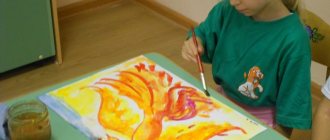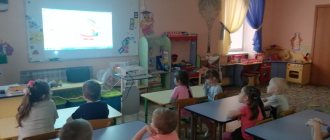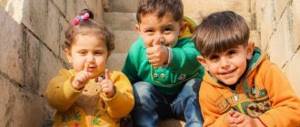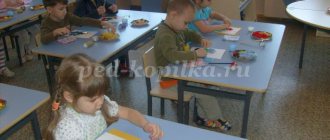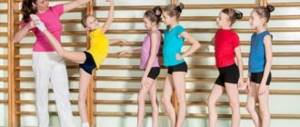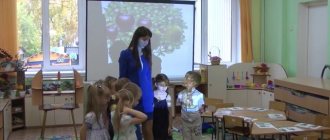The MAAM educational and information portal, founded in 2014, was developed specifically for kindergarten teachers and school teachers. By creating his own page on this resource, the teacher gets access to competitions, teaching materials, has the opportunity to publish his reports, etc.
Full access to the services of the MAAM resource is available only after registering your personal account. Therefore, in this review we will talk not only about the capabilities of the information portal, but also give complete instructions on how to create your own page.
Main functions of the Maam portal
The MAAM information portal was created to help kindergarten teachers and primary and secondary school teachers. Anyone can use the resource, but to do this you need to register. The main functions of your personal account are provided with the following capabilities:
- share teaching experience with other participants;
- download teaching materials, scripts for holidays, lesson notes, master classes;
- participation in competitions not only for children, but also for teachers;
- creating a website for your educational institution;
- create your own portfolio including diplomas, certificates and awards;
- receive diplomas for competitions.
Reference! One of the priority areas of the teacher’s work is consulting parents in kindergarten. You will find a selection of topics, as well as the messages themselves, directly in the section of the MAAM website .
Material library
The library of the network of educators is quite voluminous and contains:
- educational materials for all disciplines;
- recommendations for working with parents;
- scenarios for holidays (including sports);
- developments in the management of educational institutions;
For ease of searching for materials, the library is structured by educational level :
- preschool (“Kindergarten”);
- school (with a separate subsection for primary school);
- secondary (primary and secondary vocational education);
- higher education (HEI).
Complete removal of Internet explorer
After moving to the section of interest, the user is presented with a form for searching and sorting works.
For kindergarten, the INES portal for educators provides the ability to search by the name of the material, type of activity and age group. School developments can be filtered by name, subject, type and class. Materials for vocational education can be searched by name, field of study and type, and for higher education - in the sections “Science” and “Type of material”.
Register on the website maam.ru
Before creating your page on the MAAM portal, read the user agreement. On the official website, at the top right, click on the “Login” button and in the form that opens below, select the link “New here? “Register.”
Registration
Fill out the online application with the following information:
- first and last name in Russian letters;
- your current email address;
- set a password consisting of Latin letters and symbols.
After this, the main profile page will open and you can already work on it, add publications, blog, etc.
Login to my Maam page
The MAAM information and educational portal was developed for kindergarten teachers and primary and secondary school teachers. Login to your personal account is carried out from the main page, where you need to click on the corresponding button at the top right. But you can immediately go to the authorization form and fill out the data.
Login to your personal account
Login for educators
Educators log in to their page by filling out the authorization form. The top line indicates the login, which is one of the options:
- E-mail address;
- the end of the name of your page on the MAAM website (macsa12 or 123456).
In the second field, enter the password for your personal account that you specified when creating it.
Login to my teacher page
School teachers use the same method as educators to log into their page. That is, you will need to indicate your login and password in the authorization form.
Important! Please note that the user's first and last name does not apply to the login.
Personal account features
On the MAAM website, everyone can find interesting topics, useful materials and sources of inspiration, which is important in the work of a teacher. Therefore, the resource is actively used not only by beginning teachers, but also by highly qualified specialists. Personal account features include the following items:
- ready-made scripts for various holidays and events, as well as quizzes;
- methodological developments on all school subjects and topics in the education of preschool children;
- lesson notes for kindergartens of all age groups;
- materials for drawing up calendar-thematic planning and long-term planning;
- ready-made plans for self-education of students in distance learning;
- the opportunity to create and expand the portfolio of educators and teachers;
- editing your page;
- methodological recommendations on speech therapy, holding teacher councils, physical education of children and other topics;
- Each registered participant of the portal can share their experience with others and receive certificates and diplomas from the MAAM website for this.
The user page interface is simple and clear. The menu is divided into three parts:
- The top one contains the main items of your personal account: votes, editing your profile, adding your publications, messages, etc.
- The left is divided into general topics, and here you can also go to the kindergarten or school section. This makes it easier to find the material you need.
- The right one displays basic information, that is, the availability of templates for printing, new publications by other project participants, and ordering documents.
Registration on the website Maam.ru
After registration is completed, you can create a website for a kindergarten or even a separate group, class or school for free. Editing and changing information on the site is very simple. How is the site made? You can rate blog posts, comment and express your own opinion (vote, up or down). You can also make friends on the site and keep abreast of the events of their lives on the resource (through the use of the event feed). In turn, they will not miss a comment or publication from your side. The site organizes monthly competitions in which you can take part by posting your publication or children's creative work. The resource is convenient, interesting and very useful.
Preschool education is considered the most important stage in personality formation. At the same time, thanks to the possibility of live dialogue among people passionate about a common cause, the success of the project is certainly guaranteed. Everyone knows how difficult it is to find up-to-date information on teaching methodology. If a person has certain experience, he has a desire to share his own experiences with colleagues and hear the opinions of others. Therefore, it is proposed to use the information portal where you can find everything necessary for the professional activities of a teacher and educator.
Do you need to discuss a new technique or idea? Then you can publish educational materials created with your own hands, lesson notes or holiday scenarios on this portal. Your copyright will be recorded on the submitted text. By looking at the sections of maam ru, you will acquire useful information that will make it easier for you to deal with the difficult task of educating preschoolers and primary school students.
User reviews
User reviews help us evaluate the resource and identify its strengths and weaknesses. While studying the responses of MAAM participants, we were faced with the fact that only positive comments predominate on all sites. This suggests that the platform provides high-quality material that helps teachers and educators in their work.
On one of the forums, users share their impressions of the MAAM page. They all talk about useful materials, colorful design, and a large number of scenarios for different events. It was also noted that the site is suitable not only for teachers, but also for parents who want to independently develop their children.
On another site, user Rada left a review about the capabilities of the resource. She says that as the mother of two children of different sexes, MAAM became a real discovery for her and an assistant in raising her son and daughter. There are coloring books, educational material, well-written competitions and scenarios. And also on the platform you can communicate with other participants, share experiences and consult with specialists. All this is free.
Elena discovered the information and educational platform thanks to a relative who works in a kindergarten. The woman registered a personal account and uses its capabilities in raising her children. This is where a teacher can gain inspiration and experience as a parent. The resource helps in a playful way to teach a child everything that he should receive in preschool age. The design of the platform itself is bright and speaks about the purpose of the target audience.
As can be seen from the review, the MAAM information and educational website is great not only for the daily work of a teacher, but can also become a real assistant for mothers who want to develop their children. The functionality has everything you need for this: information sections, the opportunity to share experiences and receive advice from specialists in the field of education and physical development of children. Didactic materials are also presented here.
Have you already registered on the MAAM website? Then we ask you to share your experience and talk about its pros and cons. Your opinion will help us get a general idea of the resource, and this will allow the developers to improve and supplement it.
4 / 5 ( 2 voices)
Creative groups in preschool educational institutions
Evgeniya Sheina
Creative groups in preschool educational institutions
REGULATIONS ABOUT THE CREATIVE GROUP IN MBDOBU kindergarten No. 32
1. General Provisions.
1. The creative group is a structural unit of the scientific and methodological service of an educational institution, carrying out educational, methodological, experimental work.
2. A creative group is organized with at least three teachers. 3. The creative group is created , reorganized and liquidated by the head of the MBDOBU on the proposal of the deputy head for educational work.
4. The creative group coordinates its activities with the senior teacher and reports on the results of its activities to the teaching community.
5. the creative group complies with the Convention on the Rights of the Child, is guided by the Constitution and laws of the Russian Federation, decrees of the President of the Russian Federation, decisions of the Government of the Russian Federation, educational authorities of all levels on issues of education and upbringing of preschool children, as well as the Charter and local legal acts of the institution , orders and instructions of the manager.
The creative group educational, methodological and experimental work on the basis of these Regulations, orders and directives of the Ministry of Education of the Russian Federation, as well as recommendations of the Department of Education. On matters of internal order, she is guided by the rules and regulations of labor protection, safety and fire protection, the Charter of the preschool institution, internal labor regulations, employment agreements (contracts)
.
II. Objectives and areas of activity of the creative group
A creative group as a structural unit of a preschool institution is created to solve a certain part of the tasks assigned to the educational institution:
meeting the needs of students in intellectual, cultural and moral development;
organizing and conducting educational and experimental work at a high professional level in one or more related areas;
improving the methodology for conducting various types of classes and their methodological, material and technical support;
improving the pedagogical qualifications of teachers;
conducting pedagogical experiments
III. Basic forms of work in a creative group
1. Conducting pedagogical experiments on the problems of methods of raising children and introducing their results into the educational process.
2. Round tables, meetings and seminars on methodological issues, creative reports from teachers, etc.
3. Meetings of creative groups on methods of upbringing and education of preschool children.
4. Open classes and other forms of work with children.
5. Lectures, reports, messages and discussions on methods of upbringing and education, issues of preschool pedagogy and psychology.
6. Study and implementation in the educational process of the requirements of governing documents and advanced pedagogical experience. 7. Conducting methodological weeks.
8. Mutual attendance at classes.
IV. The main activities of the creative group
1. Analysis of the results of educational activities in areas.
2. Participation in the development of the variable part of educational plans.
3. Development of integrated educational programs in the areas being studied and their coordination with partial programs.
4. Preparation and discussion of the development of teaching aids and teaching materials for the upbringing and training of preschool children.
5. Conducting open classes and other forms of organizing the educational process.
6. Preparation and discussion of reports on methods of education and training of preschool children, advanced training and qualification category of teachers.
7. Discussion of the methodology for conducting certain types of classes and the content of didactic materials for them
8. Organization and conduct of pedagogical experiments to find and implement new developmental technologies for the upbringing and training of preschool children.
9. Development and improvement of means of increasing the visibility of education and training.
10. Selection and organization of work of mentors with young specialists and inexperienced teachers
V. Work of the creative group
1. The work of the creative group is carried out in accordance with the work plan for the current year. The plan is drawn up by the head of the creative group , considered at a meeting of the scientific and methodological council and approved by the head of the preschool institution.
Creative group meetings should be held at least once a month. For each of the issues discussed at the meeting, recommendations are adopted and recorded in the minutes log.
VI. Creative team work
For normal work in a creative group, the following documents must be available:
1. Order on the opening of a creative group .
2. Order on the appointment of the chairman of the creative group .
3. Regulations on the creative group .
4. Functional responsibilities of creative group .
5. Analysis of work over the past year
6. Work plan of the creative group for the current academic year.
7. Information about the topics of self-education for teachers of the creative group .
8. Minutes of meetings of the creative group
VII. Rights of the creative group
The creative group has the right:
1. Put forward proposals for improving the educational process in a preschool institution.
2. Raise the question of publishing materials about the best pedagogical experience accumulated in the creative group .
3. Raises the question to the administration of MBDOBU about encouraging teachers of the creative group for active participation in experimental activities.
4. Seek advice on problems of educational work with children from a senior teacher.
5. Make suggestions on the organization and content of teacher certification.
6. Nominate teachers from the creative group to participate in competitions
"Teacher of the Year"
.
VIII. Control over the activities of the creative group .
Control over the activities of the creative group is carried out by the head of the preschool institution, his deputy for educational work - senior teacher in accordance with the methodological work plan approved by the head of the preschool institution.
IX. The head of the creative group is obliged to :
1.Manage: - educational and methodological work of the creative group ;
— work on drawing up calendar and thematic plans;
— work on the creation of teaching aids, didactic and visual materials;
— experimental work of the group ;
— scientific and methodological work of teachers.
2. Organize: - prompt adjustment of educational materials;
— meetings of the creative group ;
— mutual attendance at classes
3. Provide a report on the work of the creative group to the head of the preschool institution.
